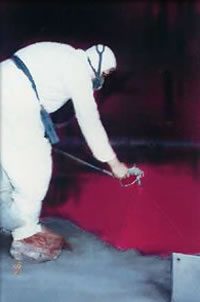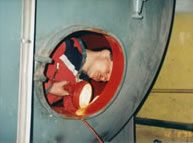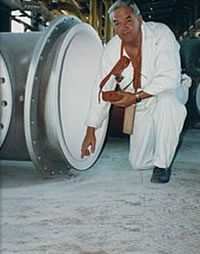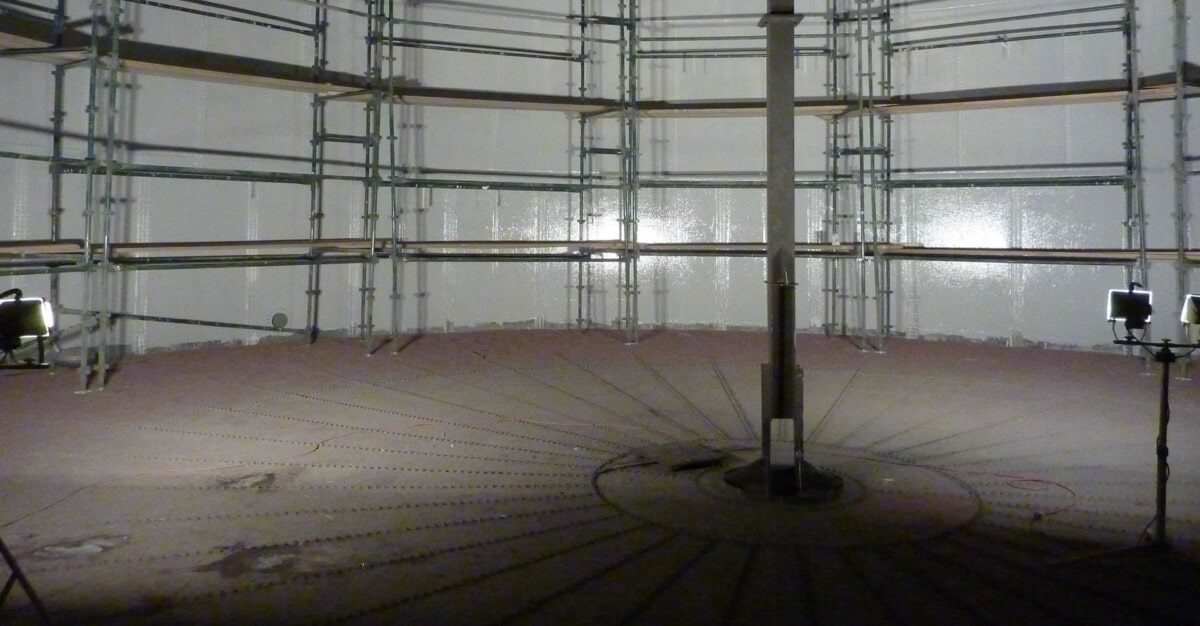How it Works
Typically a five-step process, a programme of work for tank relining would go as follows:
Specification
We have developed a database of several hundred specialised painting and tank lining materials from which we can choose. Because we do not manufacture the materials ourselves we are free to choose the most suitable material for each individual application situation.
Whether it be a food & beverage application or for the containment of aggressive chemicals, noise reduction or high abrasion resistance, we have many materials and systems available, ranging from modified epoxy resins and glass flake reinforced resins to infinitely flexible elastomeric polymers. Materials that can be hand applied, or materials that require specially designed equipment to spray them. Solvent-free, solvated or water-based resins, high abrasion resistance materials or surface tolerant materials. The list goes on and on.
Planning
We will survey the site, put together the team, organise the transport and equipment, get everything to the location, and perform the job – ANYWHERE IN THE WORLD.
Preparation
Prepare the tank

All traces of the original lining together with any surface contaminates are removed by abrasive blast cleaning and to produce a strong mechanical key or profile for the new lining to bond to. Areas of welding, inlet/outlet nozzles and manways, entrances, etc. are checked for smoothness, and if required, any sharp projections are removed by grinding. The whole vessel is carefully vacuum cleaned to remove any extraneous matter.
Applying the Coating
The materials that we use are manufactured to the highest international standards, in adherence with the ISO system. After the surface to be treated has been inspected, we work to the specification to apply an even layer of coating onto the surface. Research has shown that a thicker layer is not always better and that painting on the coatings is, in some cases, not effective.
There are a number of methods of applying the new coating or lining. For large areas, the airless spray system is our preferred method, as in skilled hands, it can provide a quickly completed job that gives an even coverage on all the surfaces – especially those difficult corners around the manway entrances and joint seams.

QA Testing

If a contractor cannot measure the quality of the work done, he cannot seriously offer any guarantee for his work. Therefore, having the correct test instrumentation – and the expertise in using them and correctly interpreting the results – is vitally important. During the actual application of the new lining, we are measuring the wet film thickness or “WFT” of the new lining to ensure that the new lining is being applied in accordance with the specification.
After the coating is dry, or after each coat, if using a multicoat system, we are checking the Dry Film Thickness or “DFT” of the coat and typically we would take 5 or 6 readings each square metre.
Testing for the presence of microporosity in the lining is most probably the most vital part of our QA system. In this, we are meticulously testing 100% of the treated surface area. We typically expect to find several weak points during the first test, one or two after the second test and none before we leave the site.



